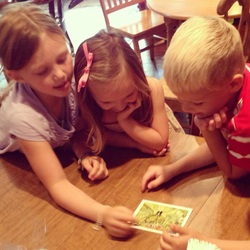 At first glance, one might think these children are simply looking at a picture. They are doing far more! In fact, they are undergoing the same training as medical school students to sharpen their habit of attention. Students at Yale head to the museum and analyze detailed paintings of the Victorian era to assess the medical conditions of the subjects. How does such a simple task build attention? Looking at something carefully rewards the viewer with a new discovery. When our primary students studied several self-portraits by van Gogh, they noticed that he did not blend his colors so that his hair and beard had strokes of red, orange, yellow, green, and blue in it. The class dubbed him "Rainbow man." One student criticized him for his "sloppy" brushwork and had a change of heart when the teacher backed up. From the blobs, dashes, and squiggles emerged a person that came alive in brilliant colors. The children begged the teacher to walk forward slowly and then backwards several times so they could see the magic happen! 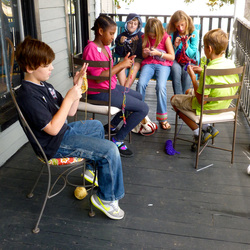 We practice the habit of attention in things we do with our hands (drawing, copywork, sewing, and finger knitting). We focus with our ears in listening to a teacher or a friend's narration and in learning the words of the songs like Great Is Thy Faithfulness, Sandlappers, El chocolate, and Dos manitas. We pay attention with our eyes when reading a book; looking for math patterns; studying the spelling, punctuation, grammar, and capitalization in our sentences for dictation; and observing nature. Whether we are working or playing, we practice attention. Before we leave the lunch table or the classroom for the day, we look around to see what needs a bit of cleaning. 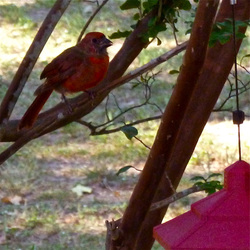 When attention wanders, the teachers guide it back to the lesson. During Spanish today, the children noticed blue jays and cardinals at the feeders. Our feathered friends completely distracted the class. So, the teacher practiced familiar phrases, el pájaro rojo and el pájaro azul, by introducing three new ones, come las semillas: the red bird eats the seeds and the blue bird eats the seeds. The reward for attention is making new discoveries. When the teacher introduced plural adjectives like dos pájaros rojos, a primary student noticed the s sounds at the end of each word. Recalling the Shakespeare play he studied last year, he remarked, "That is like how Caesar talks." With delight, the teacher shared that Caesar spoke Latin and Spanish came from Latin. 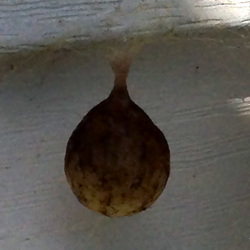 Attention to nature is a habit teachers and students are cultivating. We are collecting still objects like bark, leaves, nests, snake skins, and feathers. Children catch insects to show to friends at recess. Lately, they have been bringing from home grasshoppers, a praying mantis, and a spider rescued from death by drowning in a swimming pool. Today, the primary class enjoyed a special treat: they took their nature notebooks on a short field trip. There, they watched a banana spider prepare a grasshopper for lunch. They had to pay careful attention for the task took less than a minute! The students also studied the spider's egg sac. 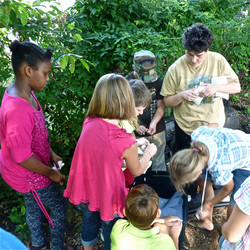 The elementary class is also working on their attention. They built a water filter for the pond and developed different solutions to its slow drainage problem. Over the weekend, the headmaster and her family troubleshooted the issue. Monday at recess, the students ran to the water filter, delighted that it was finally working, and studied the modifications. During science, they recorded their observations in their notebooks. At the beginning, the class found history narrations a challenge. Most students could only remember one fact or idea from the reading and drew a blank a day later. They asked for tips, and their teacher saw a pattern in their narrations: the students paid attention to one thing to narrate and relaxed for the rest of the passage. Once they learned to concentrate from beginning to end and then narrate from beginning to end, their memory improved. In fact, they read four different books, only on Fridays. Every week, they can recall the reading from the week before! Learning to marshal the powers of attention is not easy at first. After a month of school, the elementary class and their teacher had a conversation about this habit. They concluded, "The habit of attention changes who you are. It changes how you see the world." Charlotte Mason could not have said it better!
1 Comment
|
HCSA community called to offer another way to learn for students in Clarendon County Archives
December 2019
|
 RSS Feed
RSS Feed
